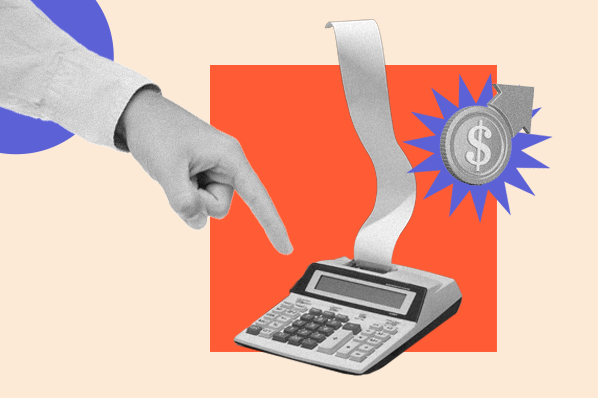When measuring the value of a company, investors look at equity — which represents both the ownership of a company and its worth. Investors also view equity as indicative of an organization’s financial health, including its ability to pay off debts and scale.
Since equity has critical uses in business, entrepreneurs should learn how to define and calculate it. By understanding both forms — shareholders’ and owner’s — entrepreneurs can better measure the value of their startup.
What Is Equity?
Equity measures the amount of money that would be returned to shareholders if the business liquidated its assets and paid off its liabilities. Examples of assets include accounts receivable, cash, real estate, and patents, while liabilities include any debts owed to other institutions or individuals.
Depending on the financial health of a business, equity can be a positive or negative number. For instance, if a business takes out a loan and fails to make payments, it’ll reach insolvency — and eventually, possibly bankruptcy.
When a business declares Chapter 7 bankruptcy, it stops operating and an external trustee works to liquidate all of its assets to pay down remaining liabilities. In the end, whatever remains represents the company’s equity. If the unpaid debt is greater than the value of assets sold, the company would have negative equity.
Conversely, positive equity implies having more assets than liabilities, which points to growing value.
Investors also use equity to calculate the debt-to-equity (D/E) ratio, which shows how much debt a business has taken on compared with its asset values. Generally, a D/E ratio of between 1 and 1.5 indicates high leverage, although this depends on the industry. Capital-intensive companies (e.g., manufacturing) tend to have higher D/E ratios.
Owner’s Equity
The term owner’s equity typically refers to sole proprietorships (businesses with one owner) and partnerships. Unlike businesses with a slew of shareholders, sole proprietors and partnerships assume total ownership of a business and, therefore, its equity. It represents an owner’s claim to whatever remains if a business sold its assets and paid its liabilities.
For example, if a business was sold for $300m and had $50m in debt, a solopreneur would get $250m in equity. A group of three partners, on the other hand, will divvy up the $250m three ways.
The calculations for owner’s equity is the same as shareholders’ equity. You can look at an owner of a business as a shareholder with 100% equity.
Shareholders’ Equity
While owner’s equity refers to sole proprietorships and partnerships, shareholders’ equity almost always relates to businesses with multiple shareholders. In these cases, several investors have a stake in the company — meaning the business owner does not have 100% equity ownership.
There are many types of shareholders. Some are stock investors — public companies can issue equity (in the form of stocks) to raise capital and fund growth. Others may be employees of a business that offers equity as a form of compensation.
Private investors, such as angel investors and venture capitalists (VCs), will also seek equity in exchange for funding. In any case, if a business was sold or liquidated, the shareholders would receive its remaining value after liabilities were paid off.
How To Calculate Equity
To calculate equity, use your balance sheet as a guide and take your total assets and subtract your total liabilities. Therefore, the formula is:
Equity = Assets - Liabilities
Some common assets include:
- Cash
- Accounts receivable (AR)
- Inventory
- Raw materials
- Property, plant, and equipment (PPE)
- Trademarks and patents
Some common liabilities include:
- Accounts payable (AP)
- Taxes owed
- Loans
- Bank debt
- Mortgage debt
- Wages owed
Keep in mind, the formula includes both current (e.g., cash) and noncurrent (e.g., long-term debts) assets and liabilities.
As an example, if you have $30k in total assets and $27k in total liabilities, your equity would come out to $3k.
How To Calculate Shareholders’ Equity
Generally, both owner’s and shareholders’ equity have the same formula (shown above). After all, an owner is a shareholder of their business. But some investors use an alternative formula to calculate shareholders’ equity called the share capital method, also known as the investor’s equation:
Shareholders’ Equity = Share Capital + Retained Earnings - Treasury Stock
Share capital represents the money a corporation raises through issuing common or preferred stock. For example, selling 2.5k shares at $10 per share raises $25k in share capital. This formula applies only to corporations that have issued stocks.
Retained earnings are the company’s cumulative earnings after accounting for dividends. If a company gained a net profit of $7k and paid out $2k in dividends, the business would have $5k in retained earnings.
Treasury stock, also known as reacquired stock, occurs when a company buys back outstanding shares. Corporations can buy back stocks for multiple reasons, including consolidating ownership and influencing stock prices. If a company buys 1k stocks at a value of $20 per share, their treasury stock would be at $20k.
Using the above case, the shareholders’ equity would be ($25k + $5k) - $20k = $10k.
Whether you use the standard accounting or investor’s equation, you will get the same result.
Equity Examples
Most public companies have stockholders’ equity listed on their balance sheet. For instance, Apple’s quarterly report from September 2022 lists $63m in common stock equity.
If you were to calculate it yourself, the tech giant reported $351m in assets, which included cash, accounts receivable, inventory, short-term investments, and more. You can then subtract its reported liabilities of ~$288m, which included debt, accounts payable, borrowings, and others.
Apple’s positive equity signals they have sufficient assets to pay down their liabilities.
However, not all publicly traded companies have positive equity. For example, Home Depot has bounced back and forth between positive and negative equity during the past four years.
In its 2021 annual report, Home Depot reported ~$72m in total assets, including cash, accounts receivable, and finished goods. For their liabilities, the home improvement retailer noted a total of ~$74m, which includes a long-term capital lease, debt, and accounts payable. Putting it together, Home Depot has an equity of ~-$2m.
This means Home Depot has more liabilities than assets, which is likely a consequence of their aggressive stock buyback strategy. Due to an increase in sales during the pandemic, Home Depot used its excess cash to repurchase stock, bolstering its share price.
By buying a significant portion of their outstanding stocks, Home Depot increases their treasury stock — which, according to the share capital formula, decreases shareholders’ equity.
What did you think of this article?
Business Acumen

-1.png)






![Business Ethics — Why They Matter and How Your Company Can Get it Right [+Expert Tips]](https://53.fs1.hubspotusercontent-na1.net/hubfs/53/business-ethics-1-20250224-5750570.webp)






